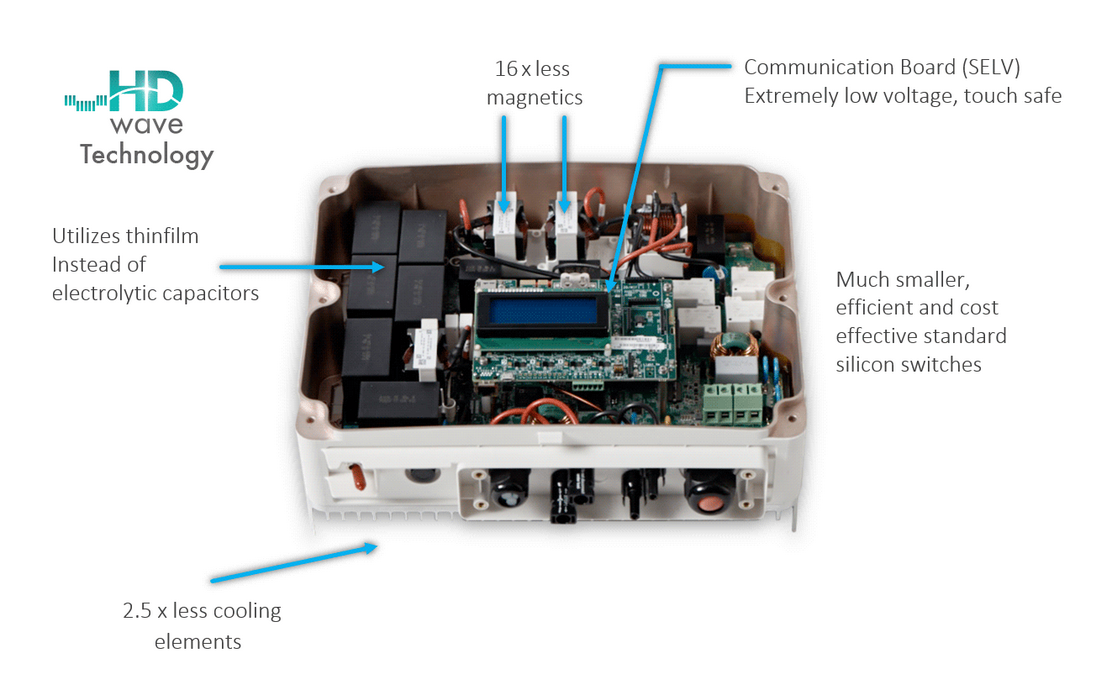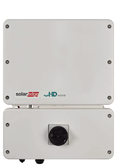 Loading... Please wait...
Loading... Please wait...- Home
- Solaris Blog
- Cutting Edge SolarEdge HD Wave Technology
Products
- Solar Panels
- Solar Panel Kits
- Solar Generators
- Inverters
- Inverter Monitoring
- Inverter Accessories
- Balance of Systems
- Racking and Mounting
- Rails
- Flashings
- Splice Kits
- Stopper Sleeves
- Conduit Mounts
- Attachments
- Brace Assembly
- Base Mount
- Brackets
- Bolts
- Clamps
- Caps
- L-Feet
- Washers
- Skirt
- Lugs
- Tilt Legs
- Hooks
- Stand-Offs
- Ballast Bay
- Top of Pole Mount
- Side of Pole Mount
- Flush Mount Kits
- Ground Mount Kits
- Roof Mount Kits
- Hardware Packages
- Wire Management
- Batteries
- Battery Accessories
- Charge Controllers
- Tools and Supplies
- View All Products
Cutting Edge SolarEdge HD Wave Technology
Posted by Brandi Casey on 16th Apr 2017
SolarEdge has made a name for themselves in residential solar inverter technology. Their inverters are not only highly-efficient, but affordable and easy to install, making them a favorite in the solar industry. Their new series, the HD wave is backed by groundbreaking technology that rightfully earned it the 2016 Intersolar Award. The award was granted due in large part to the 99% CEC weighted efficiency, and up to 155% DC/AC oversizing capabilities. The 3000w and 3800w inverters are currently on the market, and the 5000w scheduled to be released at the end of June, the 6000w in the beginning of July, and the 7600w in the middle of August.
What makes the HD wave so special? The answer is simple,
technology. Using a novel power conversion technology that is based on a
distributed switching and powerful DSP processing, the HD-Wave technology
inverter is able to synthesize a clean sine wave that leads to a dramatic
reduction in the magnetics and heavy cooling elements. This technology allows
more energy production for an improved return on investment. Current inverters have switching elements that
make a crude sine wave, that create a huge loss of power and efficiency. To
learn more about the technology, you can view their technology overview below.
In addition, the design of the inverter is small and
lightweight, weighing under twenty-five pounds. The compactness of this
technology is largely due to fact that a large number of magnetics have been
taken out, and the metallic cooling systems where fans dissipate heat are no
longer necessary. This streamlines the installation process and opens up a
world of possibilities for where you can install the inverter. It also allows
longer strings up to 6000 watts per strong on the SE7600 module, which in
combination with their oversizing capabilities opens up a world of
possibilities for expansion of their system. For safety, the inverters have an
integrated auto-rapid shutdown, faster commissioning with rapid pairings and
four button touch panel. The technology also allows for less heat and thin film
capacitors and has optional built in metering with 0.5% accuracy.





